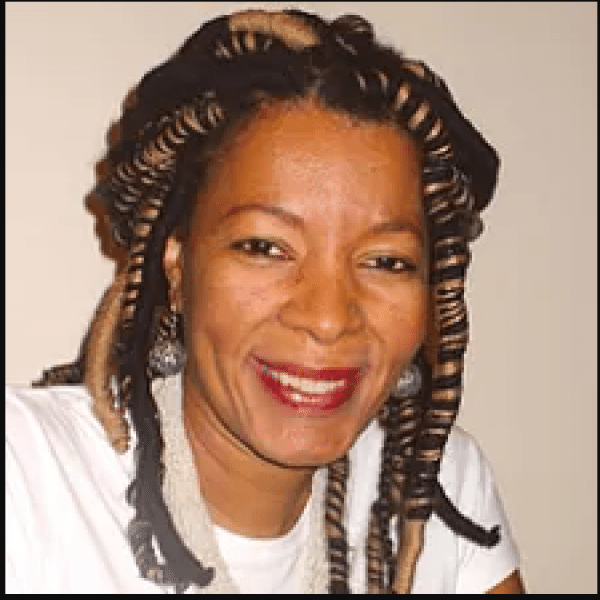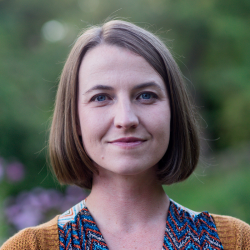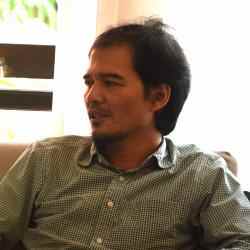Introduction
Amid escalating violence and deepening poverty, youth in the slums of Brazil’s major cities find themselves surrounded by dangers and temptations, alienated from the rest of their society. Isabel Aparecida dos Santos, better known as Bel, enables these youth to lead their communities and gain access to services and opportunities that have remained out of reach for decades. Through her work Bel establishes enduring links between polarized social classes and nurtures the development of citizens who can confront, challenge, and overcome the many faces of injustice in Brazil.
The New Idea
Piecemeal reforms, romantic pleas for peace, and external relief programs have all failed to significantly reduce violence and poverty in Brazil’s urban periphery. In contrast to such efforts, Bel’s approach is pragmatic and comprehensive, driven by members of peripheral communities and aimed at helping disenfranchised individuals build solutions to their own problems. By enabling core groups of youth to become autonomous advocates of their own rights, she spearheads a process of transformation with powerful results for largely disenfranchised black youth.
Against the cycles of poverty and violence that too often trap these young people, her work sets in motion cycles of physical and social transformation. Bel organizes youth to build or renew public spaces such as parks, warehouses, or community centers in urban slums. The new or renewed centers become “free spaces,” providing both the stability and dynamism for democratic organizing. They develop into epicenters of dialogue, civic engagement, and a host of efforts to transform impoverished communities. The youth involved in creating and maintaining these spaces become powerful social actors, able to change their communities by curbing violence, improving education, and contributing to prosperity.
Bel also transforms the way that service institutions such as schools, public health facilities, and the police force interact with black youth. She pushes these institutions to question the absence of youth as active participants in their programs, which are often specifically meant to foster youth involvement and improve their quality of life. As the leaders of these institutions come to an awareness of this absence, Bel helps them create outlets for youth participation and leadership that can transform their relationship to the communities they serve.
With the reclaimed public spaces as a base, and supported by new links between disenfranchised youth and public institutions, Bel begins to forge powerful alliances among disparate groups. She brings disenfranchised black youth together with teachers, health professionals, police, parents, community leaders, and middle- and upper-class youth to discuss their differences and craft collective solutions to worsening problems in Brazilian slums. This work challenges Brazil’s polarized social structure by bringing together groups who have been conditioned to treat each other as opponents to directly tackle the fear and inequality that perpetuate social problems.
The Problem
Violence in Brazil’s urban periphery has grown rapidly over the past 20 years, defying all attempts to keep it under control. Policy shifts, peace programs, and crackdowns by the police have all failed to make a significant impact on the spreading waves of crime. The rapid rise of drug trafficking, coupled with increasingly aggressive police tactics in poor neighborhoods, helped boost the murder rate among Brazilians aged 15 to 24 years old by 89 percent between 1993 and 2001. According to UNESCO, Brazil today ranks fifth in the world for homicides among youth between the ages of 15 and 24, with 54.5 out of every 100,000 young Brazilians murdered each year.
Among the hardest hit by this outbreak of crime and violence are communities in the peripheral slums of large cities. Increases in crime only aggravate the poverty that has plagued these communities for decades. As their neighborhoods sink further into distress, growing numbers of black youths are excluded from the job opportunities, quality education programs, and social services available in wealthier neighborhoods. Black youth in Brazil today are not only frequently denied employment and adequate health services, but they also are subject to frequent police abuse. They are met with suspicion and discrimination in stores, restaurants, and other public places, compounding problems of self-esteem and deepening their sense of alienation from the rest of society.
The impacts of crime on poor communities are multiplied by growing racial and economic inequality. The homicide rate among blacks in Brazil is consistently higher than among whites, particularly for black youth, who are slain at a rate 74 percent higher than whites of the same age. The murder rate among white youth was 39.3 per 100,000 in 2002, while their black peers were killed at a rate of 68.4 per 100,000. Economic inequality is a growing problem as well, in São Paulo, the largest city in Brazil, the population of the two wealthiest regions dropped sharply in the 1990s, while the poorest grew by more than a third. According to the city’s Human Development Index (HDI), almost 90 percent of São Paulo residents now live in its two poorest regions. As greater numbers of Brazilians migrate to peripheral neighborhoods, they place ever greater stress on the overtaxed and underfunded institutions that serve these communities.
Poverty and inequality intensify the dangers faced by the nation’s youth. Adolescents from poor regions may reach high school, but they are often disappointed when they do, most urban schools are inadequately staffed and have little ability to shield students from the impact of violence in their neighborhood. Some youth, once faced with little opportunity for educational advancement and few hopes for formal employment, turn to drug trafficking and crime. Even those who steer clear of such temptations are confronted every day with discrimination, violence, and harshly limited economic prospects.
The Strategy
Bel works to break down prejudice and expand opportunities in São Paulo’s poorest neighborhoods, engaging young people to help create a just and democratic society. Her threefold strategy consists of creating positive spaces for youth to organize, building self-esteem through youth empowerment programs, and forging alliances between youths and authorities to resolve deep-rooted problems.
Through her program, young people first conduct a historical survey of their district, identifying the origins of conflicts and assessing where and how decisions are made in their communities. Once they have identified centers of power and conflict, the youth select an ideal location to serve as their home base. They reclaim an abandoned community center or blighted park, or establish a library, creating a space where they can organize, train, and engage the public. Youth determine their own indicators for impact. Together with Bel, they watch for reductions in mortality and violence, improvement in access to public spaces, amplified academic access, expanded youth presence as promoters of social services (rather than passive recipients), increased facility of access between the urban periphery and center (including enhanced public transportation), improved quality of the physical environment, and universal access to services and policies.
Bel bolsters self-esteem by making youth experts in the problems confronting their communities, their underlying causes, and their rights and responsibilities as citizens. Young people’s confidence multiplies as they move from creating their own space, to meeting and organizing with other actors and authorities, to working for changes in public policy on issues ranging from police violence to racial discrimination. They engage directly with the principal authorities in their communities, working with them to tackle entrenched social problems. Bringing youth and authorities into collaborative and meaningful contact—often for the first time—helps them reduce tensions, dispel fear and distrust, and build a strong foundation for community-driven reforms.
Through Bel’s work, youth become autonomous actors, responsible for bringing change to their own communities, and nontraditional partners such as police, teachers, healthcare workers, and other service providers become engaged in a mutual process of transformation. Youth in this program have the experience and skills to succeed in areas that otherwise would seem unfriendly or inaccessible, such as universities, public services, and job sites. As these young people bring issues and insights from their communities to other parts of society, they begin a process of transformation that leaves both periphery and center fundamentally changed.
Working from this foundation, Bel creates a spider web of links between individuals and institutions, building partnerships with municipal education and health officials, police precincts, community organizations and citizen sector entities, and youth groups from the economically advantaged city center. Her alliances will soon extend to universities and businesses, and Bel is now leveraging her network of links to replicate approach in marginalized areas across Brazil.
The Person
The oldest of five daughters, Bel grew up in slums along São Paulo’s periphery. Her father was a bricklayer, and her mother a maid with dreams of high educational achievement for all her daughters. Her entrepreneurial spirit blossomed at an early age: as a 14-year-old she led a drive to create a group home for young women trying to extract themselves from prostitution. She convinced the local bishop to reverse his condemning attitude toward prostitution and support her efforts to enable young prostitutes to seek alternative livelihoods. Soon after, Bel established a home for street children called the Home for Small Workers. Still a teenager, she worked with youths recently released from detention centers and spent her spare time studying revolutionary movements, liberation theology, and the work of Paulo Freire.
Though her father discouraged her from going to college, asking her instead to contribute to the family’s income, Bel refused to give up her dream of becoming a teacher. She saved money working as a manicurist and eventually secured enough financial backing to cover her tuition and help support her family. At university she joined the Unified Black Movement, connecting for the first time to the powerful network of Afro-Brazilians striving for opportunities and rights throughout Brazil. She pushed the principles of the movement as she realized her dream and became a teacher, working in the slums of São Paulo to help her students reflect on their lives and grapple with hard issues of race and inequality.
Throughout her life, Bel has been a passionate defender of disadvantaged young people, and she has repeatedly founded and led organizations to meet their often desperate need. In 1991, she transformed a small organization called the Girls Home into the Center for the Defense of Children and Youth, using it as a base for programs of direct service and advocacy. She founded “Casa Dez” as a support center for youths released from detention centers. After years in Italy studying solutions to the problems of youth, she returned to Brazil and created another program designed to empower students to analyze and challenge racism in education. Drawing on the success of this program, she began the masterwork described in the sections above, a leadership program for São Paulo’s marginalized youth that helps them transcend and transform their environment of crime, violence, and limited opportunity. Through her work, Bel seeks to deeply change the relationship between center and periphery, and take a major stride toward mitigating social and economic inequality in Brazil.




